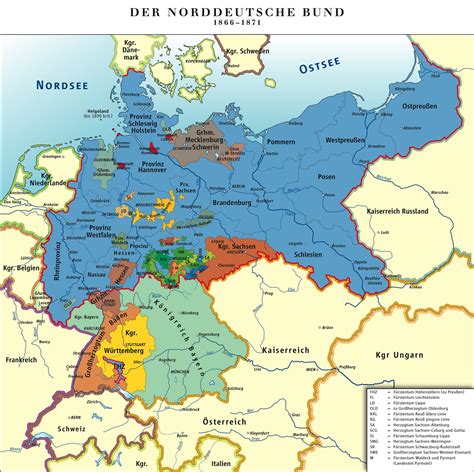Explore the origins, rise, golden age, decline, and legacy of the Serbian Kingdom in this comprehensive blog post. Discover the history of this influential medieval kingdom.
Origins of the Kingdom of Serbia
Contents
The Kingdom of Serbia has a rich and diverse history that spans centuries. Its origins can be traced back to the early medieval period, when the Serbian tribes began to coalesce into a unified kingdom. The process of formation was gradual and complex, as the Serbs were influenced by neighboring Byzantine and Latin cultures.
One of the key factors in the emergence of the Kingdom of Serbia was the leadership of Prince Stefan Nemanja, who established the Nemanjić dynasty in the 12th century. Under his rule, the fledgling Serbian state began to expand and consolidate its power, laying the foundations for the future medieval kingdom.
The origins of the Kingdom of Serbia are also closely tied to the geoeconomic context of the Balkans during the medieval period. The region was a crossroads of different civilizations, and the Serbs played a crucial role in shaping its destiny, forging alliances and engaging in conflicts with neighboring regions.
By the end of the 13th century, the Kingdom of Serbia had firmly established itself as a significant political entity in the Balkan region, with its own unique cultural identity and state institutions. The origins of the Serbian kingdom laid the groundwork for its future development and historical impact in Europe.
Rise of the Serbian Kingdom
The Rise of the Serbian Kingdom marked a significant period in the history of Serbia, as it saw the emergence of a united and powerful state in the region. This era began in the early 12th century with the leadership of Stefan Nemanja, who laid the foundations for the kingdom’s expansion and consolidation. Under Nemanja’s rule, the Serbian state grew in strength, both politically and militarily, and established itself as a dominant force in the Balkans.
During this time, the Serbian Kingdom experienced a period of territorial expansion, as it conquered and assimilated neighboring regions and principalities. The kingdom’s conquests enabled it to assert its influence over a large portion of the Balkan peninsula, and it became a major player in the political landscape of Southeastern Europe. The rise of the Serbian Kingdom also brought about an era of cultural and economic prosperity, as it facilitated the exchange of ideas and goods with neighboring states and civilizations.
The ascendancy of the Serbian Kingdom was characterized by a strong sense of national identity and unity, as the ruling elite sought to consolidate and strengthen the fledgling state. This period witnessed the emergence of a distinct Serbian culture and identity, as well as the adoption of Orthodox Christianity as the state religion. The rise of the Serbian Kingdom also saw the establishment of strong and enduring diplomatic ties with other European powers, further solidifying its place on the international stage.
In conclusion, the Rise of the Serbian Kingdom was a pivotal moment in the history of Serbia, as it marked the transformation of a collection of disparate principalities into a unified and powerful state. This period laid the groundwork for the kingdom’s future achievements and its enduring legacy in the history of the Balkans and Europe.
Golden Age of the Serbian Kingdom
The Golden Age of the Serbian Kingdom refers to the period in Serbian history when the kingdom experienced a significant increase in power, influence, and cultural development. This era, also known as the Nemanjić dynasty, lasted from the late 12th century to the mid-14th century. During this time, the Serbian Kingdom reached its peak under the rule of great leaders such as Stefan Nemanja, Stefan the First-Crowned, and Stefan Dušan.
Under the leadership of these influential rulers, the Serbian Kingdom expanded its territory, formed alliances with other powerful European states, and established itself as a dominant force in the Balkans. This period of prosperity and growth also saw the rise of Serbian architecture, literature, and art, contributing to the cultural richness of the kingdom.
The Golden Age also witnessed the Serbian Church gaining autonomy and recognition, further solidifying the kingdom’s religious and political influence. Additionally, trade and commerce flourished, leading to economic prosperity and the strengthening of international relations.
Despite facing internal and external challenges, the Golden Age of the Serbian Kingdom represents a pivotal time in Serbian history, characterized by political stability, territorial expansion, and cultural advancement. The legacy of this period continues to shape the identity and heritage of modern-day Serbia.
Decline of the Serbian Kingdom
The decline of the Serbian Kingdom began in the late 14th century, after the death of Tsar Stefan Dušan. This marked the start of a period of internal strife, as various noble families vied for power and control. The weakened central authority led to increased instability and conflicts within the kingdom.
One of the major factors contributing to the decline was the invasion of the Ottoman Empire. The Battle of Maritsa in 1371 resulted in a devastating defeat for the Serbian forces, leading to the loss of territory and weakening of the kingdom’s military power. Subsequent conflicts and battles further eroded the strength of the Serbian Kingdom.
Internally, the struggle for power among the noble families and internal divisions weakened the kingdom’s ability to resist external threats. The lack of unified leadership and internal conflicts made it difficult to mount an effective defense against the Ottoman advances.
By the late 15th century, the Serbian Kingdom had been reduced to a small state, with the Ottoman Empire exerting significant influence and control over the region. The decline of the Serbian Kingdom marked the end of an era and the beginning of a new chapter in the region’s history.
Legacy of the Serbian Kingdom
Legacy of the Serbian Kingdom
The legacy of the Serbian Kingdom is one that has left a lasting impact on the history and culture of the region. From its early beginnings to its eventual decline, the kingdom has left behind a rich and diverse legacy that is still felt to this day.
One of the most significant aspects of the legacy of the Serbian Kingdom is its role in shaping the political and cultural identity of the modern-day nation of Serbia. The kingdom played a crucial role in establishing the foundations of the Serbian state, and many of its traditions and customs continue to be an important part of Serbian culture.
Additionally, the Serbian Kingdom left behind a legacy of great architectural and artistic achievements. Many of the kingdom’s most famous landmarks, such as the monasteries of Studenica and Sopocani, are still standing today and serve as a reminder of the kingdom’s rich cultural heritage.
Furthermore, the Serbian Kingdom’s legacy can also be seen in its lasting impact on the broader history of the region. The kingdom’s influence can be felt in the neighboring countries of Bosnia, Croatia, and Montenegro, where Serbian traditions and customs continue to play a significant role in shaping the cultural landscape.
In conclusion, the legacy of the Serbian Kingdom is one that continues to be felt in the modern-day. From its influence on the political and cultural identity of Serbia to its lasting impact on the broader history of the region, the kingdom has left behind a rich and diverse legacy that continues to be celebrated and honored to this day.













